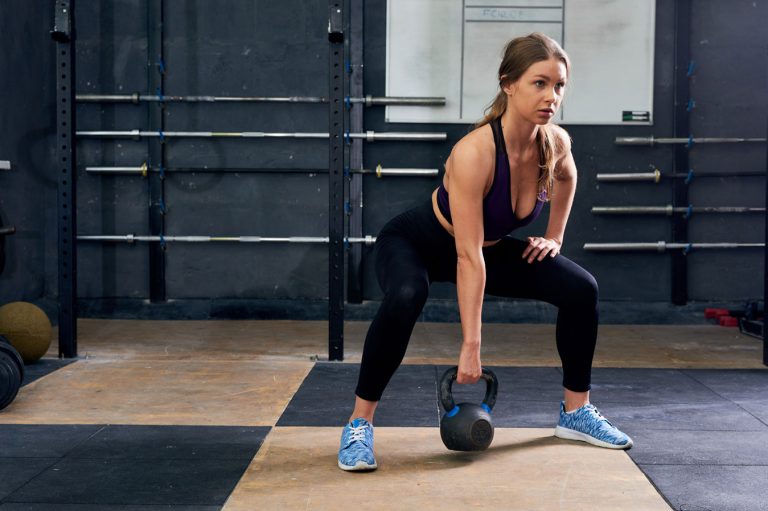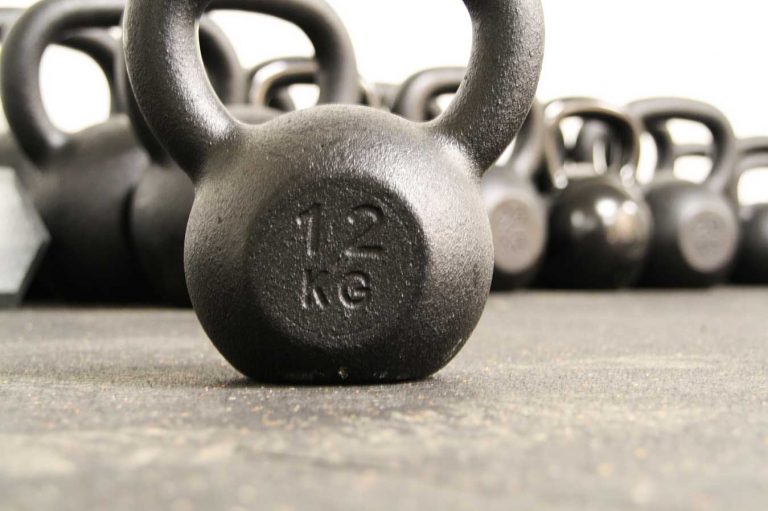Despite their growing popularity over the last decade, kettlebells are still not a common household term. Most people have heard of dumbbells or barbells. Kettlebells, not so much. Even though numerous studies have proven that exercising with them is an efficient way to lose weight, build muscle, and even rehab from an injury. The truth is, people are still skeptical that you can get a full-body workout with such a small tool.
Considering that big brand name manufacturers spend a lot of advertising dollars promoting their version of a home gym for thousands of dollars, it should come as no surprise that there is disbelief among the general public about the effectiveness of kettlebell workouts. How could something that is so portable help a person achieve so much? For that answer, I think I’ve covered the basics in my kettlebell guide.
While the information contained in my guide is straightforward, it doesn’t mention the different types of kettlebells. Depending on where you do your research, you’ll likely come across two main variations – regular style or competition style. I wouldn’t go as far as saying that one is superior to the other. Rather, it truly depends on what your personal goals are.
Regular (Cast Iron) Kettlebells
No products found.
Cast iron kettlebells are probably the more recognized of the two styles. Most manufacturers will produce cast iron kettlebells but not all of them offer competition kettlebells. The same really can’t be said the other way around. The regular kettlebells cost less to make and are in all likelihood, less intimidating than their competition counterparts.
For the sake of uniformity, regular kettlebells can also include vinyl-coating, cement-filling, or even rubber. Although you really should go with one made completely from cast iron due its durability. Other than some minor chipping and flaking, they will hold up very well over the course of many years.
Personally, I would suggest this style if you’re trying to lose weight or exercise for better health. That’s not to say that you can’t switch to competition kettlebells later on. After all, that’s what I’ve done. However, if you’re just beginning your fitness journey, allow me to explain my reasoning for opting for the regular style.
Why Choose Cast Iron Kettlebells
If you’re like me and realize a lifestyle change is needed, a cast iron kettlebell is a great choice. In my case, I was gaining weight due to unhealthy living and eating habits. I didn’t exercise and became somewhat of a slouch not all that long ago. When I started to experience serious health problems like sleep apnea, profuse sweating, and chronic fatigue, I knew a change was necessary.
At the time I bought my first kettlebell I didn’t even realize there was this other (competition) style. Looking back, I think I might have become too discouraged if I mistakenly purchased a competition kettlebell. Here’s my reasoning behind that conclusion.
- Size – Unlike competition kettlebells which are uniform in size no matter what the weight is, cast iron kettlebells can vary greatly in size. Smaller sizes like 5, 10, and 15 lb. kettlebells usually feature a handle wider than the base. This makes it easier for newcomers to handle and get acclimated to their new fitness tool. Once you get to the heavier (45+ lbs.) kettlebells, those handles start to become dwarfed when compared to the base.
- Handle Shape – Speaking of the handle, the difference between the two styles shouldn’t be overlooked. On a regular kettlebell, the sides of the handle that attach to the base point inwards. With a competition kettlebell, those sides come straight down towards the base and the window size is always the same. Simply put, the hand insertion of regular kettlebells is typically big enough to accommodate both two and one-handed exercises while competition kettlebells are better suited for one-handed exercises.
- Price – There’s no denying that regular kettlebells are less expensive on a pound-per-pound basis. The material of iron and easier manufacturing process is what gives them the edge in this category.
Competition (Steel) Kettlebells
No products found.
So where are you most likely to see competition kettlebells online? Group message boards and forums. This makes sense of course since many members of these communities are experienced with kettlebells and are comfortable showing off their workouts and exercises. That’s not to say beginners are not welcomed or even discouraged from joining. However, thinking of it logically, how many new users are willing to put themselves out there for others to see?
Now, I’m not suggesting that if a person has zero experience with kettlebells that they automatically should hold off on purchasing a competition kettlebell. If you’re no stranger to the gym or are an athlete you might appreciate the advantages that this style offers. Let me explain why.
- Standardization – As mentioned in the last section, the size of the kettlebell is exactly the same. No matter if the kettlebell weighs 20 lbs. or 80 lbs. With no difference in shape or size, it’s easier to anticipate where the kettlebell will rest on your forearm when doing various exercises. Any good athlete will tell you that consistency is key.
- Grip – Since the window size is smaller on competition kettlebells, there is less room for your hand to move around and slip. It should feel pretty secure as you work on high-repetition sets of one-handed exercises.
- Material – Since they are made from steel, you’re ensured that your kettlebell will last a lifetime. The only concern is rusting which is easily avoided by wiping it down after use.
What Are Your Needs and Goals?
So there you have it. The style of kettlebell really does depend on you as an individual. Even though I recently upgraded to a 45 lb. competition kettlebell, I still love using my older and lighter cast iron kettlebells. In fact, after exercising with one and really giving it some time, I’m sure you’ll likely want to purchase additional kettlebells down the road. Either way, you’re in for some short but intense workouts.
If you’ve purchased one style or the other I’d love to hear your thoughts below in the comments! Tell me what decisive factors were most important. Happy swinging!



